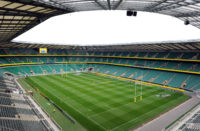Many would say that rugby and American football are the same game – however, these two sports have quite a few differences. The concept of the two sports are similar and they have shared origins, as they come from the 19th century British game of rugby football.
When comparing rugby and American football one will need to pay special attention to rules, field size, scoring system and so much more. Here’s your chance to learn more about the similarities and differences between American football and rugby.
General Similarities and Differences
An American football game is slower-paced compared to rugby. One game can last up to a few hours, while rugby league matches usually last up to 80 minutes. In addition, as long as interaction with players is concerned, only the player with the ball can be attacked. Otherwise, the players and the team are in for the penalty.
If you are getting interested in these sports here are some more facts. Passing in these two sports is also different. For example, passing the ball forward is prohibited in rugby, while it is completely common for American football. Yet, backward passing is accepted in both.
Footballers in rugby need to kick the ball and push it onto the ground when in the try zone. This is the only way to score and get to a touchdown. However, in American football, the players will only need to cross the line.
In case you are thinking about betting on either of these, you will need to know all of these details before you start looking for online sportsbooks and browsing this page. Another great difference between the two is in the equipment used. In football, the players are wearing tons of protective equipment, while in rugby the equipment is kept to a minimum.
Field Details and Dimensions
A rugby field can be long up to 130 yards and 74 yards wide. Every 11 yards there are lines crossing the field. Additionally, the try line is positioned at 110 yards and that is where the 52 feet high H-shaped goalposts are. The in-goal area is approximately 12 yards long and the goalposts are apart by 18 feet. Finally, the crossbar at goalposts is at 9,8 feet.
On the other hand, the football field has a bit different dimensions. It is 120 yards long and 53 1⁄3 yards wide. Goal lines at two ends of the field are 100 yards apart. In this sport, the scoring area or end zone goes up to 10 yards beyond goal lines. Lines are crossing the field every 5 yards. Moreover, fork-shaped goalposts are 8.5 feet high and 24 feet apart.
Scoring Terminology and Rules
Now let’s tackle the scoring terminology and rules A touchdown in football is called a try in rugby. Also, the football players are allowed to carry the ball to the end-zone/in-goal area, while in rugby the ball needs to touch the ground. Speaking of touchdowns, in American football, it is worth 6 points while in a rugby game it is worth 4 points.
The similarities between the touchdown scoring in the two sports are that both allow scoring more points after a touchdown by kicking the ball through the posts. Such points are called point after touchdown or conversion. In the professional American football league NFL, it is worth 1 point while in rugby leagues it is worth 2 points. As far as the football conversions are concerned, they refer to the second shot at a touchdown.
Here are some more similarities and differences:
| American Football | Rugby |
| – A field goal is 3 points – Safety scores 2 points – Offense has 4 downs to get to 10 yards | – A conversion is 2 points – Penalty goal is 3 points – Drop goal is 3 points |
Players and Teams
Not to forget, there is a difference in the number of players per team in these two sports. Rugby, a full-contact sport is played by two teams with thirteen athletes. American football has a few players less than that. To be exact, a standard football game is played with two competing teams where each team has eleven players.
Hopefully, you got a chance to learn something new about sports and find out what are the main differences and similarities between American football and rugby.

























